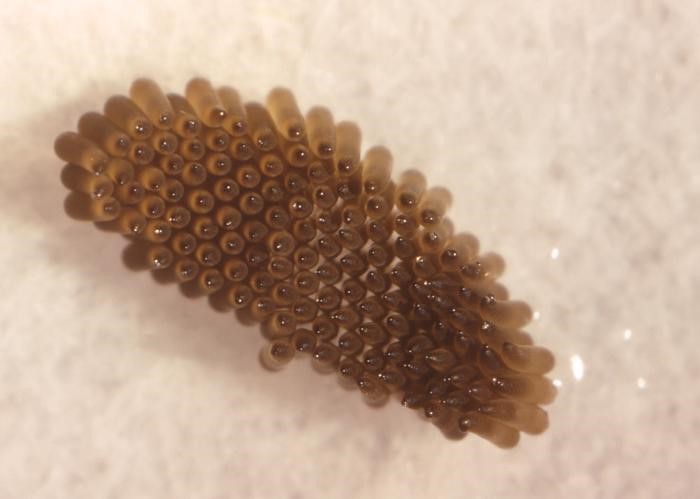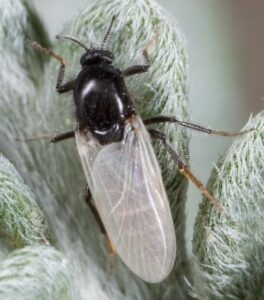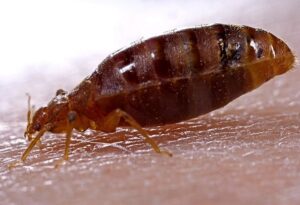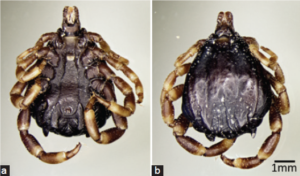Culex Mosquito (Biting Nuisance Species)
Culex pipiens, C. quinquefasciatus, and C. tarsalis
General Description
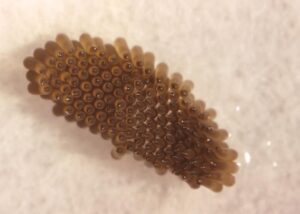
Eggs. |
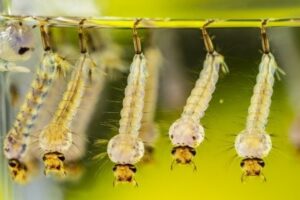
Larvae |
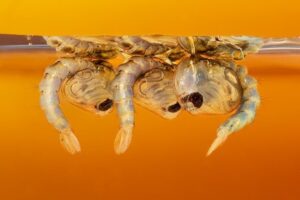
Pupa |
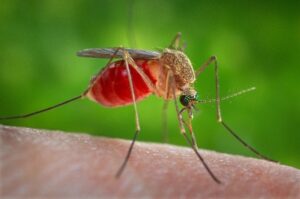
Adult |
Life Cycle and Common Characteristics
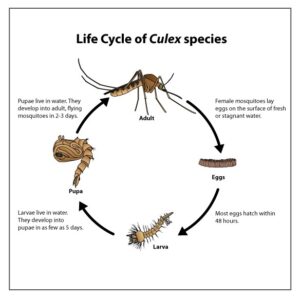
Life cycle takes about 7-10 days for an egg to develop into an adult mosquito.
- Females lay eggs (3 mm in length) on the surface of fresh or stagnant water. Water sources can include barrels, unmaintained swimming pools, creeks, ditches, and marshy areas.
- A female Culexmosquito lays eggs one at a time in the form of blocks resembling the shape of a boat in which the eggs adhere to an adhesive substance, and the egg boat contains approximately 400 eggs, and it is concave from the top. The eggs are located in it in a vertical position relative to the surface of the water, and the pointed side is the upper one.
- Eggs stick together to form a raft of 100 to 300 eggs. The raft floats on the water’s surface.
- Eggs cannot withstand desiccation and are usually associated with permanent or semi-permanent water They will hatch after about 2 days in water and without water, they desiccate and die.
- Larvae hatch from mosquito eggs and feed in the middle range below the surface of the water.
- Larvae can be seen in the water. They are very active and are often called “wigglers.”
- They feed on a variety of things found in the water.
- Larvae shed their skin (molt) several times during this stage.
- Larvae may require at least 7-10 days to complete their development.
- Pupae live in water. Pupae do not have external mouthparts and do not feed during this stage.
- The duration of the pupal stage is generally 2-3 days.
- Adult (5 mm in length) emerges from a pupa and flies away.
- Female mosquitoes bite people and animals at night and day, in dark rooms, and during the cold.
- Mosquitoes need blood to produce eggs.
- After blood feeding, female mosquitoes look for water sources to lay eggs.
- Culexmosquitoes don’t fly long distances (up to 3.2 km).
- Some Culex mosquitoes prefer to live near and bite birds. They bite people when other animals are not nearby.
- Mosquitoes live outdoors or near homes.
Damage and Medical Implications
1- Rift Valley Fever
The disease is caused by a virus called Phlebo and belongs to the Bunyaviridae family. It is a large group of viruses transmitted by arthropods such as mosquitoes and ticks. It is isolated from several wild animals and the strains of this virus are immunologically similar. This disease is transmitted among animals by female Culex mosquitoes, as they abound in humid areas with frequent seasonal rains.
Goats, sheep, cows, buffaloes, camels, and humans are a major natural hosts of the disease. Some wild animals such as antelopes, monkeys, rodents, dogs, and cats are considered natural reservoirs of the disease. The disease has spread, starting with the continent of Africa, especially in Kenya, Uganda, Zimbabwe, South Africa, and Mozambique. It appeared in Sudan in 1973 and in Egypt in 1977, where it infected about 20,000 people, of whom 600 died. It also appeared in Yemen and Saudi Arabia in 2000, when it recorded 109 deaths in Yemen and 121 deaths in Saudi Arabia.
Humans become infected through direct contact with infected animals, their meat, or samples taken from infected animals for the purpose of laboratory testing. The symptoms of the disease in humans are similar to the symptoms of influenza and include fever, headache, runny nose, joint and muscle pain, miscarriage of pregnant women, and sometimes complications such as fatal hemorrhagic fever, neurological symptoms, and retinitis with temporary blindness occur.
The incubation period in animals is very fast and ranges between 12-96 hours and in humans between 4-6 days. Symptoms associated with the disease in adult animals, including cows and sheep, include fever, lethargy, loss of appetite, ataxia, purulent runny nose, and bloody diarrhea. As for young animals of young age, such as lambs and calves, the symptoms are more than severe and only an increase in the number of deaths is observed by more than 30%.
2- Japanese Encephalitis
This disease is transmitted by Culex tritaeniorhyncus female mosquitoes, and this disease has no specialized treatment, and if one of the injured can be saved, he continues to suffer from brain damage as a late effect. The virus that causes this disease has increased and until recently this disease remained the most threatening disease in Japan until measures were taken to eliminate mosquito larvae in their places of residence, especially in rice fields, by developing water control standards such as frequent drainage, irrigation obstacles, and continuous irrigation
3- Meningitis Encephalitis
This disease is caused by a virus that is transmitted to humans by female Culex mosquitoes of the sexes Culex and Aedes. The disease causes inflammation of the membranes of the brain and the nervous system, and its most important symptoms are a sudden rise in the patient’s temperature, accompanied by headache, lethargy, an increase in the rate of breathing and pulse, with the general dissolution of the body, stiffness in the neck, and difficulty in speaking. A coma may occur when the disease intensifies.

